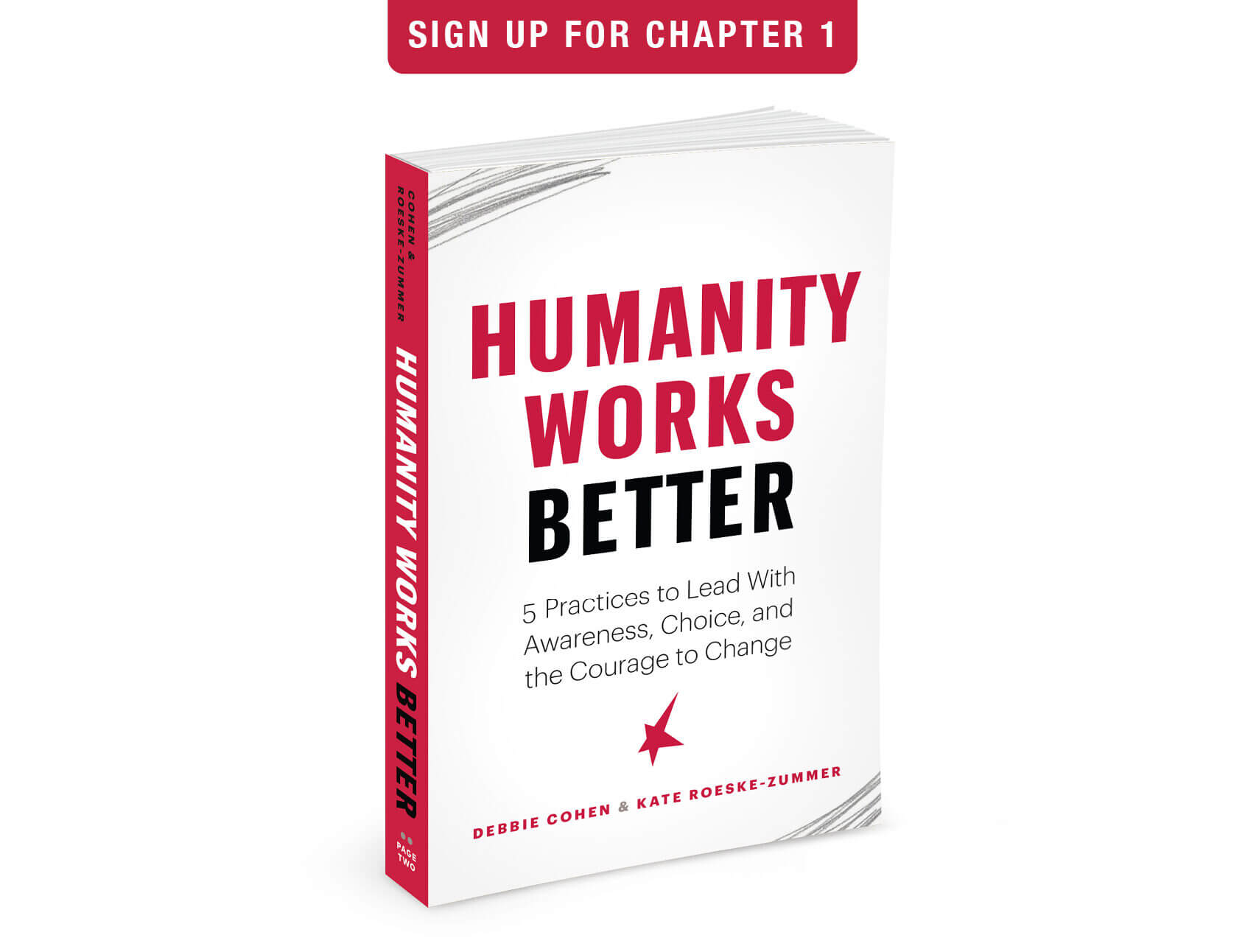
Untethered? How to Navigate Competing Needs takes a look at how to live and work sheltered-in-place with others who are energetically different from you.
Untethered. When you hear that word, what comes to mind? When Deb was a kid, she spent summers camping and boating at the lake. One of the most freeing feelings was floating aimlessly, untethered in the current. Relaxed, she would succumb to the current and let it take her wherever it wanted. It provoked feelings of being both free and safe. Okay, the truth is that sense of freedom and safety was, in part, because she had a life jacket on and was fully capable of swimming herself back to shore. Circumstances are everything when you are untethered!
Speaking of circumstances, we can probably agree, right now they are more unusual than not. The current around us moves swiftly and feels dangerous. We are each searching for our metaphoric life jacket and trying to figure out what we are capable of controlling.We want to feel free and safe, but right now there isn’t much of that going around. So, what is possible?
We recently came across the works of Michael A. Singer, New York Times Best-selling author of The Untethered Soul. In this book he introduces the idea of our “inner energy” and examines the cause of its source and fluctuations. He offers the concept of reaching “a state of well-being and acceptance by letting life flow through you without ever blocking its stream of energy.” That last part really caused the control-freak inside each of us to rear up. What would it be like to accept what comes your way and just let it flow through you? What could that look like now?
In the 1960’s Psychologist Carl Jung was the first person to describe the two personality extremes, introverts and extroverts. His thinking defined introverts and extroverts based on how they regain energy, meaning, how do you restore yourself? At the end of a long, hard day do you want to be out and about, surrounded by a lot of friends, or would you rather head home for a nice glass of wine, a soft fire, and a good movie? We decided to revisit the dynamics and differences in those of us with more introverted energy and those with more extroverted energy. The outcome of this exploration generated some thoughts on how to navigate those differences and embrace greater flow, now that we are living and working in much closer proximity to one another. With credit to the writing of Dr. Timothy Legg let’s start by getting on the same page with some vocabulary.
Introverts. An introvert is often thought of as a quiet, reserved, and thoughtful individual. They don’t seek out special attention or social engagements, as these events can result in them feeling exhausted and drained. So if you are an introvert, you’ll know when you’ve maxed out and need to recharge your batteries. Some common personality traits of introverts are:
- They prefer time to yourself and working alone
- They have a close circle of friends and like it that way
- They are introspective and curious
- They are drained by social interactions and may “zone out” of situations that feel too chaotic or uncomfortable
Extroverts. An extrovert seeks out interaction, conversations, and social stimulation. They thrive in the frenzy of a busy environment. Extroverts find too much alone time drains their natural energy and they need to recharge their internal batteries by being around other people. Some common personality traits of extroverts are:
- They enjoy social settings an don’t like or need a lot of alone time
- They thrive around people and have a large circle of friends
- They’re outgoing and optimistic and aren’t afraid of risk
- They prefer to talk out problems or questions
There is, of course, a spectrum for both traits. Personality traits are part of your evolution and growth as an individual. They are part of what makes you, uniquely you! Over a lifetime your tendencies can change. To illustrate this, we offer ourselves up as examples:
Deb recalls the first time she was typed an introvert. She wondered how this could be because her job as the head of a non-profit organization required her to be out in front of people all-day-every-day, interfacing with a wide range of people. By her outward behavior, one would have thought her to be an extrovert. Until she realized her introverted qualities were about how she recovers from the energetic expenditures of the day. She had learned to express extroverted qualities in her day-to-day work, but refilling her energy was, and remains, a solitary experience.
Without a doubt, Kate is an extrovert, tried and true. She jokes and says that, “I don’t know what I am thinking until the words come out of my mouth.” And that is so true! As an extrovert, she truly does process her thoughts (a lot of the time) by speaking out loud. She is energized by being around other people and sharing ideas with them. But that doesn’t mean, as an extrovert, that she doesn’t need time on her own – because she absolutely does. The end of the day comes swiftly for Kate. There is little conversation with her past about 8:30pm, and anybody who knows her, knows that! After that witching hour, she retreats into a solitary place to wind down and refuel.
So, what happens when we work closely together or, (gasp) shelter-in-place for weeks at a time, with a mix of introverts and extroverts? Carl Jung wrote “The meeting of two personalities is like the contact of two chemical substances; if there is any reaction, both are transformed.” So how do we do this?
Photo by Alex Kondratiev on Unsplash
The secret is knowing, as extroverts and introverts, we need different things from one another, and our surroundings. Author and speaker Susan Cain has written a great book on this topic: Quiet. How to be an introvert in a world that cannot stop talking. We highly recommend her work. She deepens awareness about the qualities of both introverts and extroverts, and she offers important insights about how, as a society, we have moved towards over-valuing extroversion and away from valuing introversion.
Anais Nin wrote: “Our culture made a virtue of living only as extroverts. We discouraged the inner journey, the quest for a center. So, we lost our center and have to find it again.” We offer a few tips and techniques from the perspective of “the other side,” of introverts and extroverts, perhaps a chance to find a new “center”:
Extroverts put energy towards noticing what the people around you need. You are a great host, so think about your interactions with others as a chance to notice and embrace what they need.
- Be OK with silence. If you are leading a discussion or want input, it can be challenging to not have anyone talk. Your mind might be racing, you might be ready to brainstorm, but everyone does not work that way. Others may need time to think before they offer out ideas. Learn to pause and give folks a few minutes to think or write down their ideas. To manage your own energy during periods of silence, focus on your own thoughts, get curious about your own ideas, jot them down or doodle. This silence won’t last forever!
- Offer to help. While shelter-in-place may restrict your typical social interactions, there are a lot of people in need. How can you get your needs for interaction with others met, albeit in different ways than you are used? What gifts do you have to offer another human being? Even the smallest expressions can make a difference. Look around you, get creative.
- Notice others. One of your superpowers is your energetic pull towards other people. Check in with the quieter voices in your world – how are they doing? What do they need? How can you navigate this together? Negotiate between what you need and how you can best serve one another right now.
Introverts tend to have keen observation skills and listen in a very focused way. Put these superpowers to use helping those around you see possibilities where they see limitations.
- Embrace some chaos. People need to release pent-up energy. Where can you get creative and help some energetic chaos come to life in a way that also works for you? Knowing this is needed, how can you help orchestrate periods for that energy to be released? We are loving the 7pm pot-banging and singing that is routinely erupting in some cities. It’s a great example of controlled chaos, all for a great cause.
- Capture the moments. We are living in historic times. Our stories will be told, and retold. Future generations are being shaped by the times we are living in. In moments of solitude and introspection, consider capturing the feelings: all of the goodness, and the messy hard parts. Interview and observe people. Creative outlets of many kinds )photos, journals, stories, poetry, painting, video, music, etc.) can be used to capture your perspectives of this significant period in time.
- Voice your needs. If something is not working for you, let those around you know that it is not working for you. No one can read your mind. The trick here is to speak from your point of need without making the other person wrong. If their big, loud energy is challenging for you, that is about you, not them. Be clear about what you are experiencing, what is working for you. Use curiosity as a means to generate solutions that will work better for everyone. For example, you might say something like “I’m noticing our space gets louder in the afternoon. I can hear you and your buddies laughing and hanging out which sounds like a lot of fun, and I still need to focus and concentrate on my work until about 5pm. Let’s figure out how you can hang out with your friends and I can still have the focus I need. I’m open to your ideas.” This approach helps you and others recognize a broader range of possibilities than can be seen on our own. Know you are loved and worthy of giving voice to your needs.
We are a messy mix of humans, all working and living together with competing needs. This historic period of sheltering-in-place provides a unique opportunity to navigate the differences that make us who we are. Search for your center, that place of well-being and acceptance. Notice where you are letting life flow through you, and perhaps where you are blocking its stream. You are growing as a human!
Acknowledgements: Our gratitude to Anika Briner and Michelle Zajac for their contributions to this article.

About the Authors, HumanityWorks Team:
Kate Roeske-Zummer, Founder and Chief Inspiration Officer
Bringing more humanity to the workplace.
Debbie Cohen, Chief Instigation Officer
Causing transformation of people and systems so both can reach their fullest potential.


